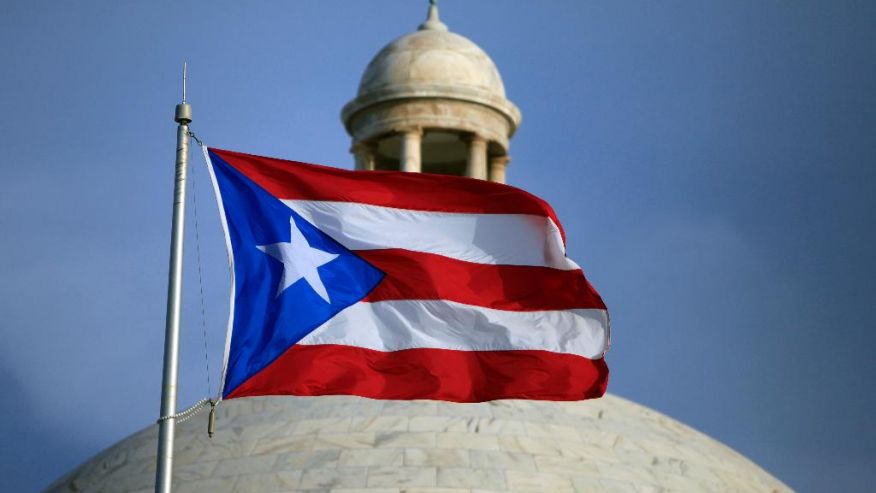
UPDATE:
After years of crisis and austerity that have resulted in a poverty rate of 45 percent, it’s hard to imagine that conditions could get much worse for the people of Puerto Rico. But if the island’s bondholders have their way, that’s exactly what’s going to happen.
Puerto Rico is facing a new round of draconian budget cuts that promise to intensify the hardships that the population is already facing. The measures are being demanded by the island’s Fiscal Control Board (FCB) that was empaneled in August 2016 and given near dictatorial power to restructure the Puerto Rican economy and budget. In particular, the panel has retirement funds, health care, education, and labor in its crosshairs.
If it moves forward with its current plan, the FCB will seek at least $7.6 billion in cuts over the next two years. This total includes $1 billion cut from health care spending, $300 million from public universities, and $200 million from pensions. In its plan, the FCB assumes a 16.2% reduction in total gross national product, a contraction that leading economists say would plunge the island into a depression.
On March 13th, the FCB and Puerto Rican Governor Ricardo Rosselló came to an initial agreement on a fiscal plan, though further cuts remain to be determined.
This is all part of longer term “shock doctrine” plan aimed at decimating Puerto Rico’s social safety net and unionized workforce, all in order to pay back the billionaire vulture funds who own a large slice of the island’s debt.
Higher Education
The FCB is demanding that the University of Puerto Rico (UPR) cut its operating budget by $300 million over the next two years. The amount of this cut — about 20% of the school’s total budget — would devastate the country’s flagship university system, long a vehicle for social mobility among the island’s population.
The FCB outlined its proposed changes to UPR’s structure and recruitment in a preliminary report it sent to Governor Rosselló. These include tuition hikes through raising per class credit prices (which the FCB calls “moving to means-based tuition”) and firing (or “rightsizing”) faculty and staff.
The FCB also called for bringing in more higher-paying international and mainland US students and expanding online and evening courses — all of which are the kinds of cash cows that a growing number of institutions of higher education around the world are using as they move towards more transactional, corporate university models.
A draft of UPR’s own budget proposal revealed more details about the types of cuts its facing:
- $111.4 million in cuts to the central administration, employee medical plans, and bonuses, including $69.6 million in cuts to payroll and employer contributions, $18 million in cuts to employee healthcare and pharmacy plans, and $5.5 million in cuts to employee Christmas bonuses.
- A hiring freeze on vacant posts
- The spending of a reserve fund
The UPR must submit a final plan for budget cuts to the FCB by March 31. Recent news reveals that it’s preparing for as much as $450 million in cuts of federal subsidies.
News of the proposed cuts has sparked large campus protests and the resignation of the interim president and 10 of 11 campus chancellors. It’s widely understood that the cumulative impact of all these cuts will be the degradation of higher education in Puerto Rico. “It is impossible to cut $300 million without affecting the quality of higher education in Puerto Rico,” said one professor.
K-12 Education
It’s not just higher education that’s facing big cuts. K-12 funding is also under attack.
The FCB is pushing to furlough teachers two days a month and other public sector workers (including, presumably, those who work in public schools) four days a month. Teachers have protested this measure, saying it would effectively cut the school year by the equivalent of two months.
Teachers also face the 10% pension cuts that the FCB is calling for.
These new measures come on top of the already dire situation for K-12 education in Puerto Rico. As we wrote in March 2016: “Puerto Rico has said it may have to close 600 of the 1,460 public schools that once existed on the island in order to save money. That is equivalent to New York State closing 1,861 of its 4,530 schools and Florida closing 1,726 of its 4,200 schools.”
Labor
Workers and unions in both the public and private sectors also stand to be hit hard by austerity measures and new labor laws.
The January 2017 Labor Transformation and Flexibility Act makes broad changes to Puerto Rico’s labor laws and attacks a range of benefits that workers have long enjoyed. These include cuts to overtime pay, sick leave, vacation, Christmas bonuses, and breaks during the workday.
Public sector workers in particular face even harsher assaults. The FCB has called for a 30% reduction in payroll costs by “by substantially eliminating positions and making other reductions to total public labor compensation.” It’s also pushing for cuts to K-12 education, which will likely mean firing teachers. The Board also is demanding a payroll freeze from 2018 to 2020.
Moreover, the Human Resources Administration & Transformation Act of January 2017 transforms the government into the single, centralized employer of all public sector agencies with the power to move workers around at will. This increase in labor “flexibility” will lead to demotions and job elimination as well as to the shuffling of workers from the public sector into public-private partnerships where they could lose union membership.
In addition to this strengthened control of the Puerto Rican state over workers, public sectors employees also face big cuts to their benefits, including vacation and sick leave. It’s important to note that these cuts will fall primarily on new hires, which will lead to a two-tier system among workers in terms of compensation. The creation of two-tier systems is a notorious employer tactic aimed at dividing workers and weakening their collective power.
On top of all this, public workers face major pension cuts. The FCB has called for a 10% cut to the public retirement system, which amounts to $200 million (the final extent of the cuts are still being discussed between the FCB and Rosselló). The cuts will primarily hit those pensioners who take in more $2,000 a month or more, which will undermine solidarity among Puerto Rican workers. Moreover, it appears that Rosselló also hopes to move towards more individualized, privatized, and less defined retirement plans.
If it’s up to the FCB, workers could face even harsher attacks than these. In a recent letter to Rosselló, the board recommended he go further with austerity measures by – as mentioned above – furloughing teachers two days a month and other government and public sector employees for four days a month. And though the FCB recently approved of Rosselló’s fiscal plan, it did so on the condition that he cut pensions even further (the fate of the FCB proposal for furloughs remains to be determined).
Healthcare
If all this wasn’t enough, Puerto Ricans also face major attacks on their health care.
Governor Rosselló is calling for $2.5 billion in healthcare cuts over the next decade. This includes major changes to Mi Salud, the island’s Medicaid program. Services will be capped or altogether eliminated, including prescription drugs, dental, private nursing, prosthetics devices, physical and occupational therapy, optometry, hospice services, speech, hearing, and language disorder services.
But the governor’s proposed health care rollbacks may not go far enough for the FCB, who has called for $1 billion per year in cuts. . While it appears the board has agreed to Rosselló’s plan for now, it retains the power going forward to impose further cuts. At a time when the island’s medical system is already in crisis, with thousands of doctors having fled, there seems to be no relief in sight for millions of Puerto Ricans.
Nickel and Dimed
The final blow in this all-out drive towards austerity is how the government plans to nickel and dime the Puerto Rican people by levying an array of additional charges.
Governor Rosselló is raising fees and fines on various aspects of daily life for millions of Puerto Ricans. These include:
- Increasing motor vehicle license fees by 10%
- Increasing insurance fees by 5%
- Increasing traffic fines fees by 10%
- Increasing other miscellaneous permits, charges and royalties by 10%
- Increasing property taxes
These flat tax rate increases ensure, again, that it will be the bulk of the island’s people who will bear the primary burden of sending debt repayments back to the coffers of billionaire hedge funds, banks, and consulting firms.
The Faces of Those Effected:
 Iris Colón Yera, school janitor
Iris Colón Yera, school janitor
I have two girls, one is a diabetic. Even with health insurance, we don’t have enough to guarantee her health. Sales tax is up, prices are up — gas, transportation, and of course medicine. Even with my husband working, what we earn isn’t enough for a decent life. We’re leaving in December for Florida, where my eldest son lives. The decision’s been made!
Elba L. Aponte Santos, Bachelor’s Degree in General Education, Master’s in Special Education, 46 credits approved, at doctoral level.
12 years of service
Uncertainty and multiple jobs for full time teachers to save up for retirement.“Like many educators today we are living with uncertainty about what will happen to our retirement. I had to take preventive measures looking for another night job where I contribute to social security insurance.” Salaries on the Island are frozen while austerity raises prices on ordinary Puerto Ricans. “The cost of living has gone up in an excessive way, in all aspects (light, water, food, taxes), however, our salaries have been paralyzed.” Meanwhile, Teachers have to pitch in to buy materials for their students, “As if it were not enough in schools every day are less resources especially to be able to photocopy material and as a special education teacher with commitment to my students I often incur expenses by reproducing material to be able to adapt and make modifications for the purpose of providing an education “
The impact to Students has been deep, as Elba notes, “Because the cuts are already happening, they have taken away resources from teachers with the 60-minute school organization (limiting them to such essential services as physical education or fine arts), in schools there are few textbooks, and resources for Reproduce material. Special education students have often been left without the therapies because the therapists resign due to lack of payment and these also have families to support. We have many families whose parents have been left jobless by the closure of industries in Cidra and have suffered the impact on the family environment since many have had to leave their homes and start living with other relatives who have humbly given shelter.”
“All these changes due to the fiscal crisis have affected the academic achievement of our students.”
Maricelis González
Special Student Services assistant, Dept of Education
We no longer have the materials or the resources to serve kids with multiple disabilities. They are such a vulnerable population. This is criminal!

Migdalia Flores Garcia
25 years of service
Families are affected and being torn up because of austerity. As Migdalia Garcia said, “My family has been affected since my son resident in Gurabo has had to go to work to Barceloneta and they are planning to leave Puerto Rico.” She argued that student enrollment has been down and that the reduction of school learning days will affect the parents who are studying and working. The cuts to educators retirement for a 25 year educator is affecting their emotional state. “If my retirement is reduced I will not be able to fulfill my economic commitments and Especially my house”

Ilanis Hernandez, 18
Born in Puerto Rico, Ilanis moved to Bridgeport CT 3 years ago after her family was threatened with eviction from their home in Barceloneta. Ilanis tells us that for many years her stepdad worked as a landscaper in Puerto Rico but things got so bad that he had to leave to Bridgeport CT before them to find a job.
Ilanis explains that months before she moved things got really bad; her mom struggled to put food on the table and they went to bed many times hungry. She says that it was only thanks to her neighbors that they were able to get by, asking for bits of food here and there to survive.
Now in Bridgeport, things are not great but better. Her stepdad has a job and they have a house in a rough but cheap part of town. Ilanis wants to go to college and study art and she is about to be the first person in her family to graduate high school
Connecticut
Mary Rosario, commercial cleaner
Last year, my brother and I had to move my mother up here because she has many health conditions and we fear that if she doesn’t get consistent care something terrible could happen to her. But I am also worried about my two grandkids who live on the island. Their mother does the best she can, but I fear whether their school will close down.
Florida
Jaymarie Ramos, high school student
With all the schools closing, I worried about whether I would be able to complete my education. With the approval of my parents, I moved to Orlando to live my aunt so I could have better access to an education in high school and college.
Alejandra Velez, health insurance administrator
I’m alive today because of being able to get health insurance in Puerto Rico when I was seriously ill and doctors couldn’t give me a diagnosis. There, I was able to qualify for Medicaid and was able to get proper treatment. After that, I returned to work, and even gave birth to my daughter. If that had happened now, with all the cuts to health insurance, who knows whether I would have made it through, and I worry about others there.
Download report update HERE.

As 2015 came to an end, there was much speculation about the January 1st deadline for Puerto Rico to pay its creditors. There was no question that the island would default on its almost $1 billion in debt payments, but no one knew precisely how large that default would be. When the deadline arrived, Puerto Rico defaulted on only $37.3 million, a much smaller amount than many had feared.[1] Some bystanders speculated that because the island could still pay 97% of their debts, the government was exaggerating the extent of their crisis.[2]
That argument not only belies fiscal reality – the Puerto Rican economy has shrunk over 10% since 2006 – but also disregards the tremendous suffering the Puerto Rican government is imposing on its people in order to pay its creditors. With a poverty rate already at an alarming 45%, the island’s austerity budget is quickly turning its debt crisis into a full-fledged humanitarian disaster.[3]
To pay back its creditors, Puerto Rico has resorted to extreme measures including delaying tax refunds to its citizens,[4] increasing sales tax by more than 50%,[5] and instituting massive cuts to education, healthcare, and social services. Unsurprisingly, Puerto Rico’s most disenfranchised populations (including Medicaid and Medicare enrollees, incarcerated people, and families with special needs children) are shouldering the burden of those measures.
The crisis is driving more Puerto Ricans off the island and onto the mainland, fueling an ongoing “population swap”[6] in which unemployed, young Puerto Ricans leave the island in search of work, while hundreds of wealthy Americans move onto to the island because the “Millionaire’s Law”[7]and other policies have turned it into a “fiscal paradise” for the wealthy.[8] Indeed, 10% of the island’s population has left in the last ten years and today as many as 3,000 Puerto Ricans are fleeing each week.[9] This massive depopulation has eroded the availability of services in Puerto Rico and shrunk its tax base, which the government relies on to pay for pensions, services, and its debt.[10]
Meanwhile, wealthy financiers are flocking to the island to take advantage of tax exemptions and cuts on corporate taxes, personal income, and capital gains.[11] At a recent investment conference, billionaire hedge fund manager John Paulson predicted Puerto Rico would become the “Singapore of the Caribbean”[12] –that is, an extremely wealthy tax haven.
This report details how, in order to pay back its creditors, the Puerto Rican government has implemented a severe austerity budget that is is creating a humanitarian crisis on the island and threatening Puerto Ricans’ access to basic services including healthcare, education, and even electricity.
Meanwhile, the hedge funds that reportedly own nearly 50% of Puerto Rico’s debt continue using vulture tactics to win as big a payday as possible at the expense of Puerto Ricans.[13]
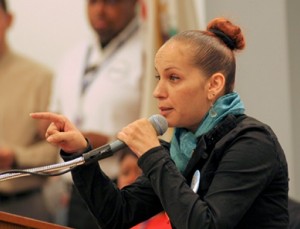 rousemary vega, chicago
rousemary vega, chicago
Rousemary Vega is a Puerto Rican mother of four who has been living in Chicago for 33 years. She says, “When the city closed my children’s school in Humboldt Park, I realized they were taking so much more than just a building. They were taking a major part of our community; all so school privatizers could make money and have their piece of the pie. I learned more about Wall Street banks’ predatory swaps with the Chicago school district and saw how the banks see our schools and communities as just another way to make a profit. They want our public money going straight to their profits.
And the exact same thing is happening in Puerto Rico. They want public money going to hedge funds before schools, healthcare, and infrastructure. Because of these hedge fund managers, our small mom and pop businesses in Puerto Rico our gone. Schools are closing. People are leaving the island because there are no chances for them to survive. The soul of Puerto Rico is gone. There is a saying that you can’t get blood out of a stone, but that is exactly what these hedge fund managers are trying to do with Puerto Rico.
I want to know: When will my children’s lives matter? And the lives of the Black and Brown children in Puerto Rico who look like them? Wall Street banks doing toxic swaps in Chicago and hedge fund managers refusing to let Puerto Rico access relief see us as the same. And they’re stealing from us.
If I could talk to Mark Brodsky from Aurelius Capital or Andrew Feldstein from BlueMountain Capital, I would ask them, ‘Don’t you have enough? Haven’t you gotten rich enough?’ It’s one thing to be a business man. It’s another to be a monster.
In Chicago and Puerto Rico, people are getting educated and rising up. If we don’t fight today, we won’t see a tomorrow. We have no choice but to fight.”

Healthcare
The combination of Puerto Rico’s budget crisis and immense disparities in federal funding for healthcare on the island as compared to the 50 mainland states has spurred massive cuts to its healthcare system.
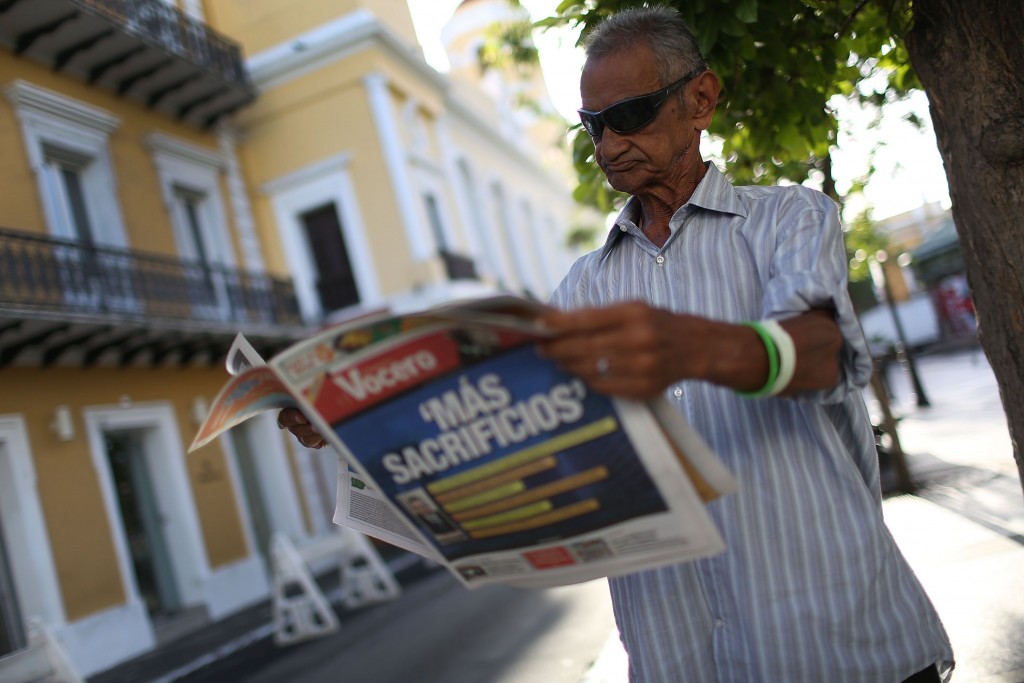
In early January, Luis Cruz Batista, Director of Puerto Rico’s Oficina de Gerencia y Presupuesto (”Office of Management and Budget”), announced a series of budget cuts totaling $254 million.[14] The Department of Health was hard hit, with cuts totaling $10 million.[15] Funding for the island’s Medicare Advantage program, which serves about 560,000 people, was also cut by 11% in January.[16] Those cuts will lead to higher copays and loss of benefits.
Puerto Rico crisis hit Department of Health hard, with cuts totaling $10 million. Share on X
Additional cuts to Mi Salud, Puerto Rico’s Medicaid program, are expected over the next two years. The effect of these cuts will be felt widely, as 45% of Puerto Rico’s population – equal to 1.6 million people – rely on Mi Salud for healthcare.[17] That program could also run out of grant money by the end of 2016 (three years earlier than expected), which could in turn lead to 900,000 people being dropped from the program.[18] Medical care experts worry that the cuts will have far reaching implications for doctors as well as patients, such as pressuring doctors and hospitals to provide services for less money, which will in turn lead to more doctors leaving Puerto Rico for better pay on the U.S. mainland.[19]
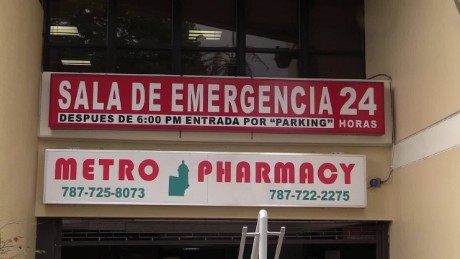
The crisis has hit hospitals and community health centers[20] especially hard. The island’s only children’s hospital cut its budget by 14% over the last two years and does not even own an MRI machine.[21] PREPA (Puerto Rico’s public power company) recently announced it would cut electricity to three clinics and hospitals that have not paid their bills.[22] In San Juan, “beds in hospital emergency rooms line the hallways”[23] and the nurse shortage is so severe that people frequently hire their own private nurses during hospital stays. The University of Puerto Rico’s Comprehensive Cancer Center’s budget was also cut by $6.8 million.[24]
In San Juan, “beds in hospital emergency rooms line the hallways” and nurse shortage is severe. Share on X
 Yulissa Arce, Orlando, Florida
Yulissa Arce, Orlando, Florida
The Puerto Rican debt and economic crisis is complicated. Even with the research I have been able to do, questions of uncertainty continue to fill my head. What are the best solutions for Puerto Rico? Why is congress refusing to take up the issue? What is my family going to do?
I am the daughter of Puerto Ricans who were born and raised on the island. My parents were part of the wave of Boricuas leaving the island in the late 80’s and early 90’s, transplanting themselves and their tiny family (me and my 2 younger brothers) in Orlando, FL in search of a better life. I grew up in Meadow Woods, the most heavily populated neighborhoods of Puerto Ricans. Growing up, it was basically just us in Florida, all of my extended family members still lived in Puerto Rico, including my grandmother.
 My grandmother is literally one of my heroes. Having worked most of her life and being the first in her family to complete some college coursework, she was definitely ahead of her time. She is strong-willed, intelligent, spiritual, and an overall amazing person. She like many Puerto Ricans started working at clothing factories, sewing undergarments and other clothing items. But for 27 years, she worked for the public school system in Camuy, Puerto Rico as a cafeteria manager. She always expressed how much she loved her job and the joy she received each day in knowing that each student received a hearty meal. After retiring from her position at the school, she continued serving her community through her church and faith.
My grandmother is literally one of my heroes. Having worked most of her life and being the first in her family to complete some college coursework, she was definitely ahead of her time. She is strong-willed, intelligent, spiritual, and an overall amazing person. She like many Puerto Ricans started working at clothing factories, sewing undergarments and other clothing items. But for 27 years, she worked for the public school system in Camuy, Puerto Rico as a cafeteria manager. She always expressed how much she loved her job and the joy she received each day in knowing that each student received a hearty meal. After retiring from her position at the school, she continued serving her community through her church and faith.
In recent years, life has gotten a lot more difficult for my grandmother. Her $400 pension, the one she worked very hard for, was gradually cut in half within the last year. Adding an increase of living expenses and on non-negotiable items such as food, medicine, and utilities, she has had to make due with a lot less. She is one of the lucky ones, because she has family in Florida that can help her, but there are thousands of elderly people living in Puerto Rico who have to choose between food, medicine, and other living expenses.
While congress ignores the plight of the 3.5 million American Citizens living in Puerto Rico and Hedge & Vulture funds continue to buy municipal debt at $0.30 per dollar, people like my grandmother have to deal with the effects of a dwindling economy and increased austerity measures being implemented by Governor Alejandro García Padilla. My family deserves better, and yours does too. We need the Federal Reserve to refinance Puerto Rico’s debt and we need to get out to the polls and vote out those politicians who are in the pockets of financial interests this election. I don’t need to live in Puerto Rico to help Puerto Rico. We can help now.

education
Last year, Puerto Rico closed 100 schools.[25] The possibility of additional cuts made headlines last summer when hedge funds holding Puerto Rican bonds released a report calling for the island to lay off teachers, close schools, and make cuts to higher education to free up money to pay its debt.[26]
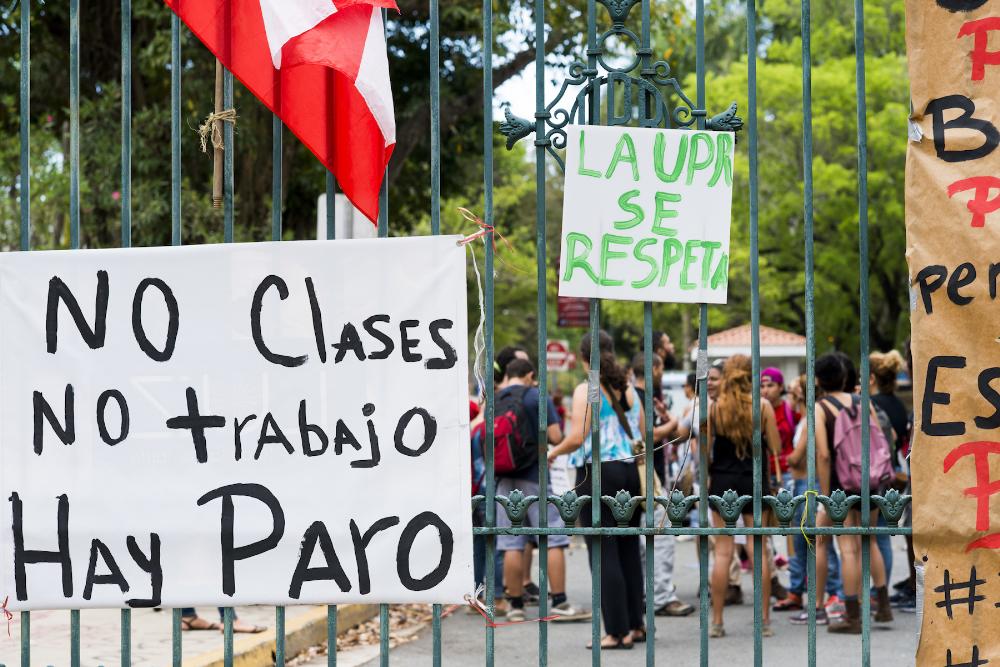
Cuts have also occurred in higher education. Last spring, Governor García Padilla proposed slashing $166 million from the University of Puerto Rico’s budget.[27] Students, faculty, and staff at the university have spoken out about the ways in which ongoing budget cuts, tuition hikes, and threats to retirement benefits of faculty are decreasing the quality of education at the school and making higher education less accessible to Puerto Ricans.[28] Last summer, University of Puerto Rico’s chair of the department of political science said that the university has “sustained a loss of $300 million in appropriations from the general treasury”[29] over the past two years.
Hedge funds holding PR bonds called for teacher lay offs, closed schools, and cuts to higher ed to pay debt. Share on X
Students and professors are feeling the ramifications of this reduced budget. For example, when professors retire the school cannot always afford to hire replacements, leading the university to rely on adjuncts and part time professors. This also causes increases in class size. The reduced budget will also strain the university pension fund, causing it to slowly dry up.[30]
In PR, 2,400 students with special needs aren't receiving the services they should such as speech therapy. Share on X
The austerity measures are also affecting special education for people with disabilities. Students have stopped attending school because the government is not paying the contractors that provide their transportation.[31] Some special education teachers have not been paid in three months.[32] About 2,400 students with special needs are not receiving services such as speech therapy.[33]
Mildred Encarnación, Puerto Rico
Mildred works as a maintenance person in a school for the Department of Education. During the last couple of years, she has seen how the utilities and taxes have all gone up. She worries about efforts from the government to privatize schools and save money by cutting wages and benefits from the working people of Puerto Rico. Recently Mildred was moved from her school with no notice and currently lives in fear that the next step will be massive layoffs.
Jamilette Diaz and Pedro Juan Soto, New Haven, CT
Jamilette Diaz, and Pedro Juan Soto came to Connecticut in March after years of fighting for better services for their son who requires special education. In Puerto Rico, Jamilette and her husband had to fight the education system to get better services. When she and her husband found themselves with no other option, they went to legal services. There they found a free lawyer that helped them get the services that their son needed. Unfortunately, things continued to get worse in PR and Jamilette decided to move to Connecticut knowing that she would leave her family and her efforts to complete a bachelor’s degree. Now in CT, Jamilette works in retail but is happy that her son is receiving the services she needs. Jamilette and Pedro, worry about what’s happening in PR, they know that cuts in services will leave children like her son in a great disadvantage and that cuts in legal services will leave many without any recourse to advocate for their families.

public workers
Puerto Rico has already implemented pension reform measures that are “more aggressive” than those that were declared unconstitutional in cases in U.S. states.[34] Successive governments enacting severe austerity measures have resulted in massive cuts for Puerto Rican public workers. Several years ago, Governor Luis Fortuño fired 30,000 public workers.[35]

In 2013 under García Padilla, the Puerto Rican government “raised the retirement age, increased employee contributions, and reduced or eliminated retiree bonuses.”[36] Recently, Governor García Padilla’s task force proposed further cuts to teacher and other public workers’ pensions as part of its package of solutions to the island’s budget crisis.[37]
By the end of 2015, the island’s government workers pension fund was “poised to go broke”[38] with only 0.7 percent of the assets needed to pay all the benefits promised to the 119,975 employees it covers. This funding level is unheard of in other U.S. states–for comparison, New York State’s pension fund funding ratio was 88.7 percent in 2014.[39]
By end of 2015, Puerto Rico govt workers pension fund had only 0.7% of assets promised to employees. Share on X
And in late January, Governor García Padilla revealed that the Puerto Rican government was not putting money towards the retirement fund that covers public employees.[40] Instead, the administration had been using the fund (which is primarily funded by contributions from employees) to provide liquidity to the Treasury Department.
Cruz M Contes, Puerto Rico
Cruz has been working as an assistant teacher for special education in the Department of Education for 15 years. She tells us that the situation has been getting harder and harder every year and people have to choose from getting food on their tables or paying their mortgage.. Her classrooms hardly have materials and she is scared every time her payday is close that there will be no money to pay for her salary. She also tells us that taxes has gone up while salaries continue to come down. Cruz also worries about her retirement, she knows that the government is not contributing enough money and she worries that she will not be able to get the retirement that she has earned as a public servant. Cruz sees people leaving the island desperate for a better life and she is frustrated by the government’s corruption, while corporations profit from our suffering.

social services and government vendors
Numerous social service programs have been slashed in the face of the debt crisis. Servicios Legales de Puerto Rico (Puerto Rico Legal Services) was forced to lay off 56 of its 288 employees in response to budget cuts. The department is facing an almost $3 million budget deficit after its budget was reduced by $8 million from 2010 to the present. These cuts will, of course, disproportionately impact Puerto Rico’s poor, as the agency serves primarily low-income populations in cases of domestic violence, evictions, foreclosures, collection of money, custody, food, and other civil disputes.[41] The budget of the Administración de Desarrollo Socioeconómico de la Familia (which oversees programs including TANF and EBT) budget was also cut by $3 million.[42]
Social services cuts will, of course, disproportionately impact Puerto Rico’s poor. Share on X
The Department of Corrections and Rehabilitation budget has been cut by $5.8 million,[43] leaving Puerto Rico’s 12,500 inmates incredibly vulnerable. On January 20th, Department Secretary Einar Ramos announced that the department could no longer pay the vendor that supplies food for inmates and was trying to reach a payment agreement with the vendor so food supply would not be interrupted.[44]
 Julio López Varona, New Haven, CT
Julio López Varona, New Haven, CT
My father has been working at the Legal Services Corporation for more than 30 years. As a lawyer, he helps represent Puerto Ricans that come to the US to work in farms and are abused by their employers. In his work, he has helped recover hundreds of thousands of dollars for poor migrant workers that come to the US looking work to support their families in the island. Over the years, the amount of lawyers that work on this cases has been reduced to the point that only my father does this work in the island. This year my father retires, with recent cuts to legal services my father’s services and expertise will probably be faced out, leaving thousands of migrant workers with nowhere to go when faced by abuse by greedy employers.
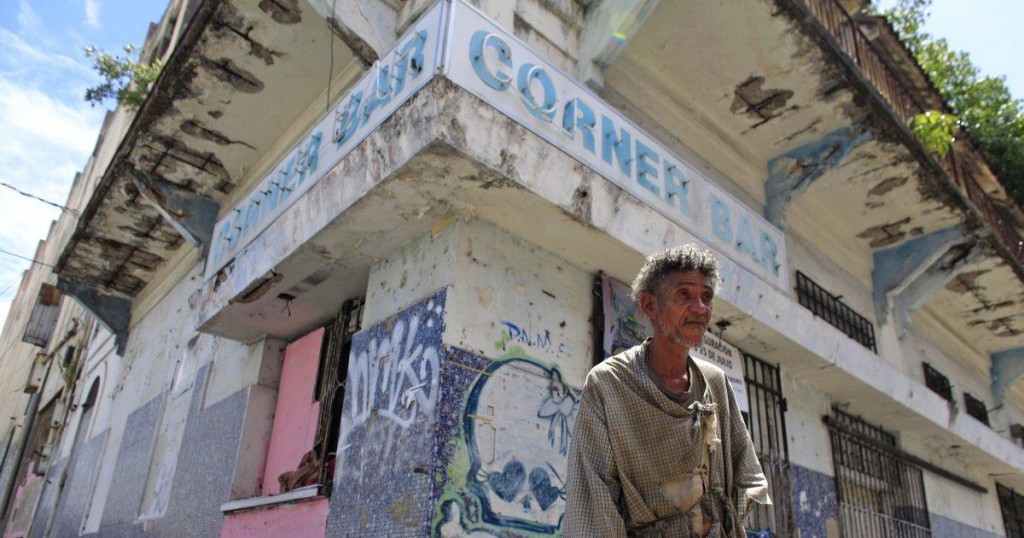
energy
As one of the largest single issuers of Puerto Rico’s debt,[45] the Puerto Rico Electric Power Authority (PREPA) has been at the center of the crisis debate. The utility has a payment of about $400 million due to bondholders on July 1st[46] and owes an additional $700 million to lenders that finance the shipment of fuel it burns to produce energy.[47]
Last week, a plan to restructure PREPA’s debt passed Puerto Rico’s House of Representatives, moving it one step closer to being signed into law by Puerto Rico’s Governor. The plan, which resulted from months of intense negotiations between PREPA and PREPA bondholders, stipulates that bondholders will be issued new bonds worth 85% of face value of their old bonds with a slower payment schedule and lower interest rates. But the future of the bill is far from sealed; it has to overcome several steep regulatory hurdles.[48] 
With the future of PREPA still suspect, bystanders are worried the utility could default on the largest payment yet, spurring “selective blackouts” across the island that could seriously compromise any chance of economic recovery the island has.[49] Some people close to the debt negotiations have suggested PREPA will increase rates significantly, perhaps by as much as 30 percent – the equivalent of a tax of nearly $1 billion a year on the people of Puerto Rico.[50]
Some have suggested PREPA will increase electricity rates 30%. Like a $1 billion/yr tax on people of PR. Share on X
Already, PREPA has cut services to save money. In early January, the utility announced it would cut electricity to three hospitals and clinics that have not paid their bills[51] unless a payment plan agreement could be reached. In December, the company cut off power to the Highway and Transportation Authority due to unpaid bills. PREPA also recently announced that on March 1st they will cut off electricity to public housing residents who have an outstanding balance with the utility for which they have not established a payment plan.[52]

transportation
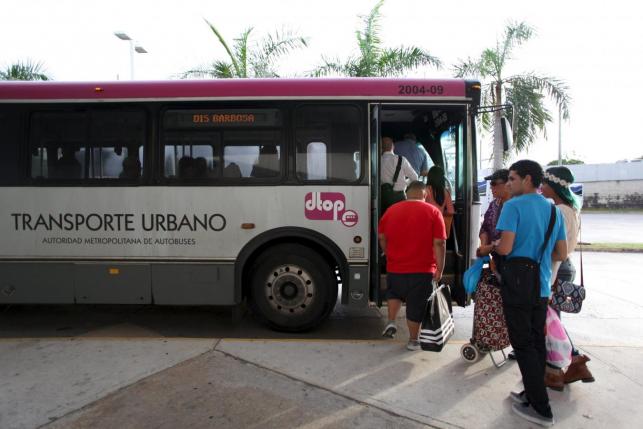
There have also been significant cuts to Puerto Rico’s public transportation system. In San Juan, some buses no longer run on certain days and fares have increased to 75 cents per ride.[53] A recent $0.30 per gallon tax increase on gasoline has also made driving more expensive.[54]

making sense of the cuts
What do these cuts mean when they are translated to the context of the U.S. mainland?
Puerto Rico has said it may have to close 600 of the 1,460 public schools that once existed on the island in order to save money.[55] That is equivalent to New York State closing 1,861 of its 4,530 schools[56] and Florida closing 1,726 of its 4,200 schools.[57]
Up to 3,000 Puerto Ricans a week are leaving Puerto Rico every week for the mainland.[58] If this continues, 156,000 people will leave Puerto Rico in a year, the equivalent of more than twice the population of Harlem leaving New York City in a year, and more than half of Orlando or the populations of Kissimmee, Poinciana and Buenaventura Lakes combined.
 fatima grito, new york city
fatima grito, new york city
Fatima Grito has been in the US for 25 years. She came from the Dominican Republic to NYC with the hopes of finding a better life and supporting her family back on the island. Like Fatima, one of Fatima’s cousins went to Puerto Rico 19 years ago. In Puerto Rico, she started a family and began a restaurant business. Her business grew and they where able to expand and even have some street vendors. With the crisis, her restaurant business is in trouble, her customers have decreased and they are thinking about moving to NYC and start again. Fatima knows that she will be there to support her family if they decide to come to NYC, but she is worried about the families that she supports in the Dominican Republic and what it will mean for her cousin to start once again from zero.

hedge fund profiteering in puerto rico
| If you’re a family in Puerto Rico | If you’re a billionaire in Puerto Rico |
| If you have a child with special needs, they cannot go to school or receive services because the government has no money to pay for teachers or student transportation.[59] | If you are David Tepper, whose fund Appaloosa Management is part of the PREPA ad hoc group[60], you finished construction on a $43 million Hamptons mansion last summer,[61] soon after a hedge fund backed report suggested Puerto Rico should close schools and lay off teachers to pay back its creditors. |
| If you live in public housing and have an outstanding payment due to PREPA, your electricity will be turned off on March 1st.[62] | If you are Ken Griffin, whose fund Citadel is currently the sixth largest owner of Banco Popular stock,[63] you went on a $290 million real estate spree at the end of last year,[64] buying two full floors of the Waldorf Astoria hotel in Chicago, three full floors of 220 Central Park South, a condo tower under construction in Midtown Manhattan, and a $60 million penthouse in Miami Beach’s Faena House.[65] |
| If you are on Medicare, your copay has gone up and you have lost benefits because the island’s Medicare Advantage program’s budget was cut by 11% in January.[66] | If you are John Paulson, who has been one of the most outspoken advocates of financial firms moving to Puerto Rico to take advantage of tax breaks, you have been buying up luxury real estate on the island, including La Concha Resort and the Condado Vanderbilt, two beachfront hotels in San Juan.[67] |
| If you are a public employee, the government has stopped putting money towards your retirement fund.[68] | If you are Paul Tudor Jones, whose fund Tudor Global Trading is a limited partner in Puerto Rico creditor Stone Lion Capital,[69] you bought a $71 million Palm Beach estate last spring.[70] |
| If you are a person in Puerto Rico, you now pay the highest sales tax in America, 11.5%.[71] | If you are a wealthy corporation, for example, Walmart, you have historically enjoyed large tax subsidies on the island[72] and taken advantage of other tax dodging strategies, such as headquartering your company in Luxembourg.[73] |
 Some of the luxury homes of John Paulson. Left, $41.3 million Southampton estate called “Old Trees.” Center, 28,500-
Some of the luxury homes of John Paulson. Left, $41.3 million Southampton estate called “Old Trees.” Center, 28,500-

FOOTNOTES
[1] http://prospect.org/article/creditors-cry-foul-puerto-ricos-default-smaller-expected
[2] http://prospect.org/article/creditors-cry-foul-puerto-ricos-default-smaller-expected
[3] http://www.cnbc.com/2016/01/30/puerto-rico-creditors-asked-to-take-45-percent-haircut-on-debt-source.html
[4] http://bigstory.ap.org/article/17c14bc0f79647bb97bac243db8e194f/puerto-rico-bank-sees-drop-liquidity-amid-economic-crisis
[5] http://wwlp.com/2015/06/30/puerto-rico-sales-tax-to-increase-by-4-and-a-half-percent/
[6] http://www.jjay.cuny.edu/sites/default/files/contentgroups/economics/Seda%202%20working%20paper.pdf
[7] http://www.nytimes.com/roomfordebate/2015/04/14/the-worst-tax-breaks/stop-letting-the-rich-move-to-puerto-rico-as-a-tax-haven
[8] http://www.jjay.cuny.edu/sites/default/files/contentgroups/economics/Seda%202%20working%20paper.pdf
[9] http://www.bbc.com/news/world-us-canada-35368786
[10] http://thehill.com/blogs/congress-blog/economy-budget/262512-the-human-impact-of-the-puerto-rico-debt-crisis
[11] http://money.cnn.com/2015/08/05/investing/puerto-rico-tax-exemptions-billionaire/
[12] http://www.bloomberg.com/news/articles/2015-12-30/puerto-rico-to-default-on-debt-on-some-bond-payments-due-jan-1
[13] http://fortune.com/2015/06/29/john-paulson-greece-puerto-rico-hedge-funds/
[14] http://elvocero.com/menos-dinero-para-los-programas-sociales/
[15] http://elvocero.com/menos-dinero-para-los-programas-sociales/
[16] http://www.businessinsider.com/ap-puerto-ricans-fear-for-their-health-as-federal-cuts-loom-2015-11
[17] http://www.businessinsider.com/ap-puerto-ricans-fear-for-their-health-as-federal-cuts-loom-2015-11
[18] http://www.nytimes.com/2015/08/03/us/health-providers-brace-for-more-cuts-to-medicare-in-puerto-rico.html
[19] http://www.businessinsider.com/ap-puerto-ricans-fear-for-their-health-as-federal-cuts-loom-2015-11
[20] http://www.rchnfoundation.org/wp-content/uploads/2015/12/Geiger-Gibson-Brief-43.pdf
[21] http://www.jubileeusa.org/press/press-item/article/puerto-rico-cuts-services-as-budget-gap-grows.html
[22] http://finance.yahoo.com/news/puerto-ricos-crisis-threatens-cut-gas-power-supplies-180625089.html
[23] http://www.nytimes.com/2015/08/03/us/health-providers-brace-for-more-cuts-to-medicare-in-puerto-rico.html
[24] http://elvocero.com/menos-dinero-para-los-programas-sociales/
[25] http://latino.foxnews.com/latino/news/2014/04/30/puerto-rico-to-close-100-schools-due-to-declining-student-population/
[26] http://www.slate.com/blogs/moneybox/2015/08/04/puerto_rico_s_debt_crisis_hedge_funds_say_the_island_should_shut_down_schools.html
[27] http://thinkprogress.org/economy/2015/08/19/3690812/austerity-students-pr/
[28] http://thinkprogress.org/economy/2015/08/19/3690812/austerity-students-pr/
[29] http://thinkprogress.org/economy/2015/08/19/3690812/austerity-students-pr/
[30] http://thinkprogress.org/economy/2015/08/19/3690812/austerity-students-pr/
[31] http://www.elnuevodia.com/noticias/locales/nota/padecenmaslacrisiseconomicalosdeabajo-2151961/
[32] http://elvocero.com/urgen-pago-a-proveedores-de-programa-de-educacion-especial/
[33] http://elvocero.com/urgen-pago-a-proveedores-de-programa-de-educacion-especial/
[34] http://thehill.com/blogs/pundits-blog/finance/266859-an-emerging-consensus-on-puerto-ricos-debt
[35] http://www.nydailynews.com/latino/puerto-rico-gov-30-000-workers-fired-crisis-article-1.369458
[36] http://www.bloomberg.com/news/articles/2015-09-25/puerto-rico-s-bonds-overshadow-pension-fund-poised-to-go-broke
[37] http://www.reuters.com/article/us-usa-puertorico-restructuring-idUSKCN0R91JD20150909
[38] http://www.bloomberg.com/news/articles/2015-09-25/puerto-rico-s-bonds-overshadow-pension-fund-poised-to-go-broke
[39] http://www.bloomberg.com/visual-data/best-and-worst/most-underfunded-pension-plans-states-1
[40] http://elvocero.com/pensionados-no-son-los-primeros/
[41] http://www.elnuevodia.com/noticias/locales/nota/despidena56empleadosdeservicioslegalesdepuertorico-2144656/
[42] http://elvocero.com/menos-dinero-para-los-programas-sociales/
[43] http://elvocero.com/menos-dinero-para-los-programas-sociales/
[44] http://www.notiuno.com/actualizacion-esperan-que-haya-comida-para-reos-este-viernes/
[45] http://www.nytimes.com/2016/01/24/business/dealbook/failed-talks-raise-specter-of-biggest-default-in-puerto-rico-crisis.html
[46] http://www.nytimes.com/2016/01/24/business/dealbook/failed-talks-raise-specter-of-biggest-default-in-puerto-rico-crisis.html
[47] http://www.nytimes.com/2016/01/24/business/dealbook/failed-talks-raise-specter-of-biggest-default-in-puerto-rico-crisis.html
[48] http://www.nytimes.com/2016/02/17/business/dealbook/puerto-ricos-house-of-representatives-passes-bill-to-restructure-9-billion-in-debt.html?_r=0
[49] http://www.nytimes.com/2016/01/24/business/dealbook/failed-talks-raise-specter-of-biggest-default-in-puerto-rico-crisis.html
[50] http://finance.yahoo.com/news/puerto-ricos-crisis-threatens-cut-gas-power-supplies-180625089.html
[51] http://finance.yahoo.com/news/puerto-ricos-crisis-threatens-cut-gas-power-supplies-180625089.html
[52] http://www.telemundopr.com/noticias/AEE-comenzara-pronto-a-cortar-la-luz-en-Vivienda-Publica—365785731.html
[53] http://thinkprogress.org/economy/2015/08/19/3690812/austerity-students-pr/
[54] https://panampost.com/belen-marty/2015/01/19/running-on-empty-puerto-rico-ups-gas-tax-amid-falling-oil-prices/
[55] http://www.foxnews.com/world/2015/05/14/wave-public-school-closures-in-puerto-rico-highlights-deepening-economic-crisis.html
[56] http://www.governor.ny.gov/sites/governor.ny.gov/files/atoms/files/NYSFailingSchoolsReport.pdf
[57] http://www.fldoe.org/schools/
[58] http://bigstory.ap.org/article/b0233b82c60748d7996fb61fffc77f4a/us-treasury-sec-puerto-rico-needs-congressional-action
[59] http://elvocero.com/urgen-pago-a-proveedores-de-programa-de-educacion-especial/
[60] http://www.reuters.com/article/us-usa-puertorico-PREPA-insight-idUSKBN0OE2SF20150529
[61] http://www.businessinsider.com/aerial-photos-of-david-teppers-hamptons-mansion-2015-9
[62] http://www.telemundopr.com/noticias/AEE-comenzara-pronto-a-cortar-la-luz-en-Vivienda-Publica—365785731.html
[63] http://finance.yahoo.com/q/mh?s=BPOP+Major+Holders
[64] http://www.cnbc.com/2015/10/04/ken-griffin-goes-on-290-million-real-estate-spree.html
[65] http://www.cnbc.com/2015/10/04/ken-griffin-goes-on-290-million-real-estate-spree.html
[66] http://www.businessinsider.com/ap-puerto-ricans-fear-for-their-health-as-federal-cuts-loom-2015-11
[67] http://www.bloomberg.com/news/articles/2014-04-24/john-paulson-says-puerto-rico-to-become-singapore-of-caribbean
[68] http://elvocero.com/pensionados-no-son-los-primeros/
[70] http://www.cnbc.com/2015/04/01/paul-tudor-jones-buys-71-million-palm-beach-estate.html
[71] http://www.forbes.com/sites/scottbeyer/2015/08/17/puerto-rico-at-11-5-has-americas-highest-sales-tax/#63e030da5424


